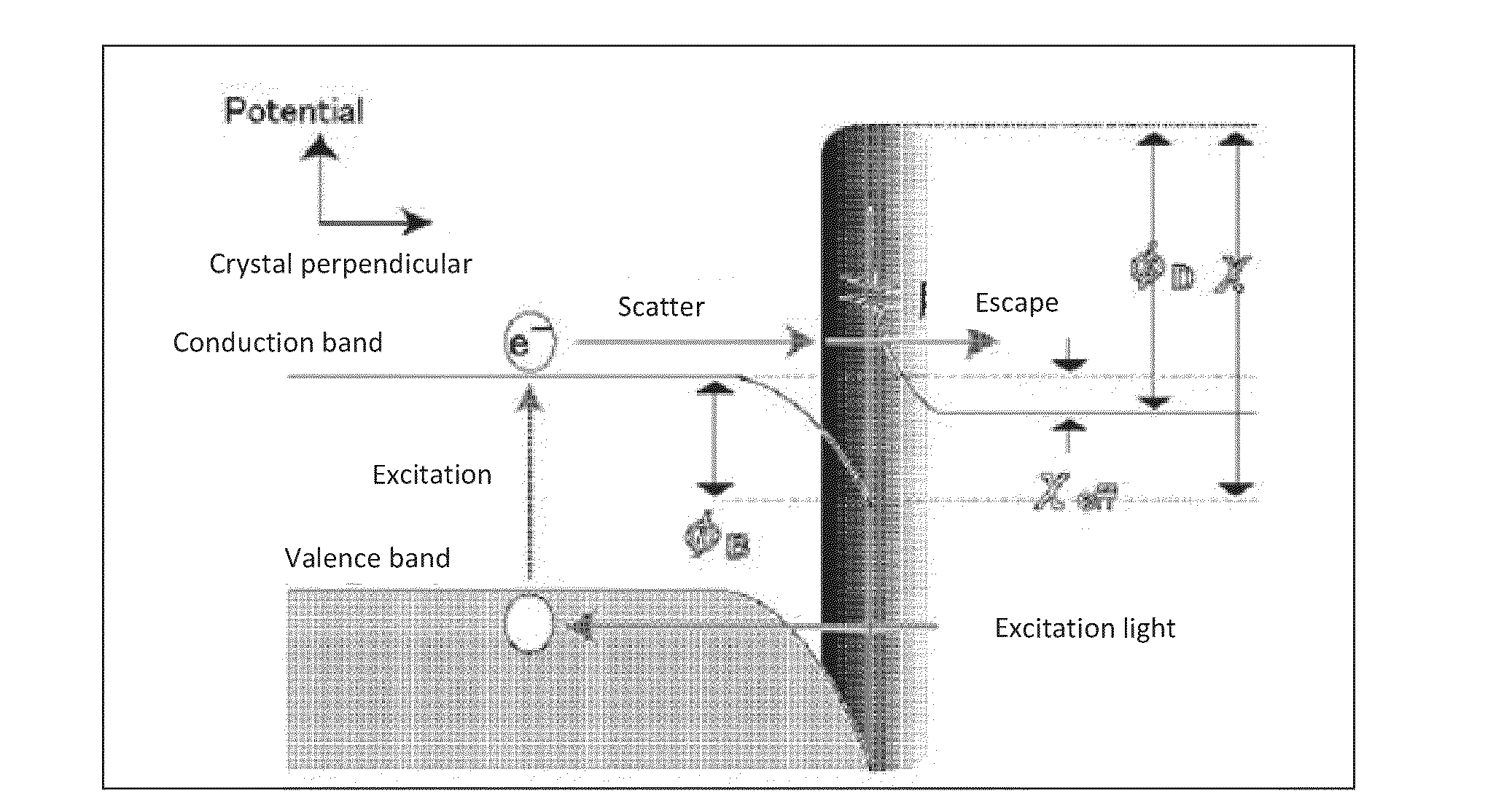Activation chamber and kit used in treatment device for lowering electron affinity, treatment device that contains said kit and is used to lower electronic affinity, photocathode electron-beam source, electron gun containing photocathode electron-beam source, free-electron laser accelerator, transmission electron microscope, scanning electron microscope, electron-beam holography microscope, electron-beam lithography device, electron-beam diffraction device, and electron-beam scanning device
a technology of activation chamber and kit, which is applied in the direction of electron gun containing photocathode electron beam source, electron-beam scanning device, electron-beam lithography device, etc., can solve the problems of lowering the capability of the electron gun, affecting the operation of the device, so as to reduce the scale of the device, improve the ease of manipulation of the existing electron gun, and improve the effect of the ability to manipulate the existing electron gun
- Summary
- Abstract
- Description
- Claims
- Application Information
AI Technical Summary
Benefits of technology
Problems solved by technology
Method used
Image
Examples
example 1
Fabrication of Activation Chamber
[0088]Using molybdenum as the material, an activation chamber was formed by cutting and surface polishing. The bottom surface was circular with a diameter of 68 mm, and the hole diameter was 11 mm.
[0089](Fabrication of Kit)
example 2
Fabrication of Fastening Member Having Surface Treatment Materials Fitted to Distal End
[0090]To the distal end of a ceramic fastening member 36 fabricated by cutting and hardening were fitted four surface treatment materials 30 (made by SAE Getters) of Cs2CrO4 having heating wiring inserted through the center. Silver electrical wire for energizing and heating the heating wiring was wired inside the fastening member 36. FIG. 20 is a photo showing the outward appearance of a fastening member having the fabricated surface treatment materials fitted to the distal end.
[0091](Fabrication of Photocathode Rod, and Photocathode Holder with Photocathode Material Attached)
[0092]The photocathode rod 50 was fabricated from titanium. The photocathode holder 51 was fabricated from molybdenum, and was approximately 34 mm in diameter. Next, a sapphire substrate on which a GaN semiconductor was grown was attached to the molybdenum with melted indium, to produce the photocathode holder 51 with the pho...
example 3
[0095]The kit fabricated in Example 2 was placed inside a vacuum chamber (Spherical Chamber made by Kimball Physics Inc.). Using a ribbon heater as heating means, the interior of the vacuum chamber was evacuated to 10−9 Pa by a vacuum pump (an ion pump made by ULVAC, or a non-evaporable getter pump made by SAES Getter), and evacuated to an ultrahigh vacuum state. The photocathode material was heated for 1 hour at approximately 550° C., removing surface impurities such as oxides and carbides. Next, a fastening member with the surface treatment material fabricated in Example 2 fitted to the distal end was energized and heated to approximately 600° C., vaporizing the surface treatment material, and Cs was vapor-deposited onto the surface of the photocathode material for 10 minutes, followed by spraying oxygen (99.999%) onto the photocathode material for 2 minutes. Spraying of the surface treatment material and the oxygen was carried out five times to carry out EA surface treatment of t...
PUM
 Login to View More
Login to View More Abstract
Description
Claims
Application Information
 Login to View More
Login to View More - R&D
- Intellectual Property
- Life Sciences
- Materials
- Tech Scout
- Unparalleled Data Quality
- Higher Quality Content
- 60% Fewer Hallucinations
Browse by: Latest US Patents, China's latest patents, Technical Efficacy Thesaurus, Application Domain, Technology Topic, Popular Technical Reports.
© 2025 PatSnap. All rights reserved.Legal|Privacy policy|Modern Slavery Act Transparency Statement|Sitemap|About US| Contact US: help@patsnap.com



